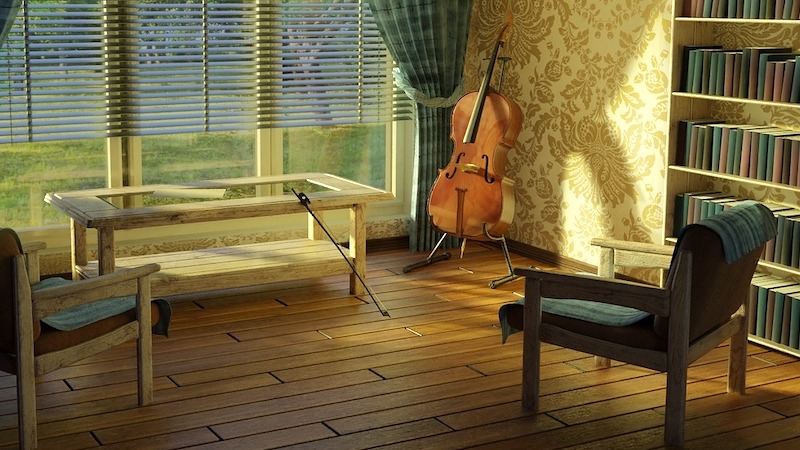Thoughts from the Practice Room of 2023
Recently I was wondering what would happen if I tried to identify the key ideas or things that have had an important effect on me over the the last year. Some of the things I have found out are the result of my own endeavors and others, from the wisdom and questioning of my students. (It’s always worth remembering that if students didn’t exist, then neither would we teachers…)

Three things stand out as important in terms of my own practicing and, by extension, teaching approach.
Practicing Fifths
The first was brought about by a book by Rodney Friend called The Violin in Fifths, which argues that we should do most of practicing in 5ths and that by doing so we automatically solve a gamut of issue such as warming up, dubious intonation and vibrato development.
I was initially somewhat skeptical but, over time, I have found this approach extremely helpful, and I am hearing a lot over the grapevine that some very well-established teachers are beginning to take this idea on board too. Doesn’t surprise me at all!
Here is a recent example I found when deciding to brush up my technique with Dont Opus. 35, No. 5: When playing etudes at this level, it is a big mistake to play things as they are written, from the beginning. Things always work better if we analyze carefully what is being asked of the left and right hands and practice these things independently. How to do this is explained perfectly (as one would expect) in The Art of the Etude by Zhakar Bron.
I started by following Bron's advice, playing all the different double stops. (Once one starts thinking in blocks of fingers, most etudes become double-stop exercises, from a left hand perspective. It’s a question of efficiency.) As I started practicing this way, I had this nagging feeling that - although the method is sound - it wasn’t giving the right information to solve the problem quickly. So I stopped working that way and practiced the first two lines in 5ths. Imagine this row of lower string notes:
G Bb G Bb C G D(2) Eb G D(2) C# and so on - but played as a 5th with the adjoining note on the D string.
This way of practicing is completely different from the conventional wisdom, but I immediately felt like I knew where all the notes I needed were. My ear dialed in very sharply, and my vibrato relaxed. After this, I found I could immediately play the passage because I had a really clear image of where every note was. This kind of thing is happening so regularly that it has become a large part of my practice, and I encourage my students to experiment with it wherever possible.
Open-String Practice
The second big change I made was a massive increase in open-string practice of repertoire. I find more and more that if the bow arm/hand really knows where it is supposed to go, then the left hand meekly follows. I find this especially helpful in unaccompanied Bach, which I now practice in this manner as part of my daily technical regime.
It’s a little bit like practicing Sevcik bowing exercises, with the added bonus that at the end you can play some Bach and it will work like magic. No day should be spent without some Bach.
Simon Fischer's Book, "Tone"
My third and final shift comes from getting my hands on Simon Fischer’s book, Tone, which I had somehow managed to miss when it came out. It is the most intensive treatment of the relationship between speed, weight and sound point across a whole slew of invaluable left hand patterns.
It’s not a "nice" fun book like The Violin Lesson, where one can find something cool to read about and reflect upon on every page. It’s just the absolute no frills, hard-core tone training manual. However, this is just the kind of work we should be keeping in mind throughout our practice time.
Personally I am quite happy to sit for two hours and just play these kind of bowing exercises instead of repertoire, but for the less nerdy, even just a few minutes a day will be, as Simon so often puts it ‘money in the bank.’
Well, that’s it for this year. All my love and gratitude to everyone out there because you make reading and writing on this website not only fun, but a truly worthwhile human endeavor. Something we are going to need a lot more of in 2024.
You might also like:
- Violinist.com interview with Simon Fischer: The Secrets of Tone Production
- Maximizing Practice Efficiency: Ysaÿe, Two-Finger Scales and Fifths
- Violin Bowing Exercise: Practicing Solo Bach on Open Strings
* * *
Enjoying Violinist.com? Click here to sign up for our free, bi-weekly email newsletter. And if you've already signed up, please invite your friends! Thank you.Tweet
Replies
Buri,
Interesting. The etude you mentioned always makes me think of Op. 43. Duo f. 2 Violinen - the Infamous "Dont Duet" but they did it anyway.
Thanks for the inspiration, Buri. I just ordered the Violin in Fifths and am looking forward to diving in!
This is one of those things that seems totally absurd, but even though I've never tried it, it kind of rings true. That's because I found scales in thirds to be one of the most elevating challenges in my study of the violin. I think it's a bit like warming up in the on-deck circle, with the lead doughnut on the end of your bat. Everything about it is suddenly harder. Then, when you take the doughnut off, you feel like you can hit the hide right off the ball.
At last. Someone who can spell doughnut!
Thanks so much for this post! Happy New Year, Buri!
This article has been archived and is no longer accepting comments.
Violinist.com is made possible by...
Dimitri Musafia, Master Maker of Violin and Viola Cases
Johnson String Instrument/Carriage House Violins
Subscribe
Laurie's Books
Discover the best of Violinist.com in these collections of editor Laurie Niles' exclusive interviews.

Violinist.com Interviews Volume 1, with introduction by Hilary Hahn

Violinist.com Interviews Volume 2, with introduction by Rachel Barton Pine











December 31, 2023 at 09:13 PM · thanks very much Buri. it's great to see you blogging again.